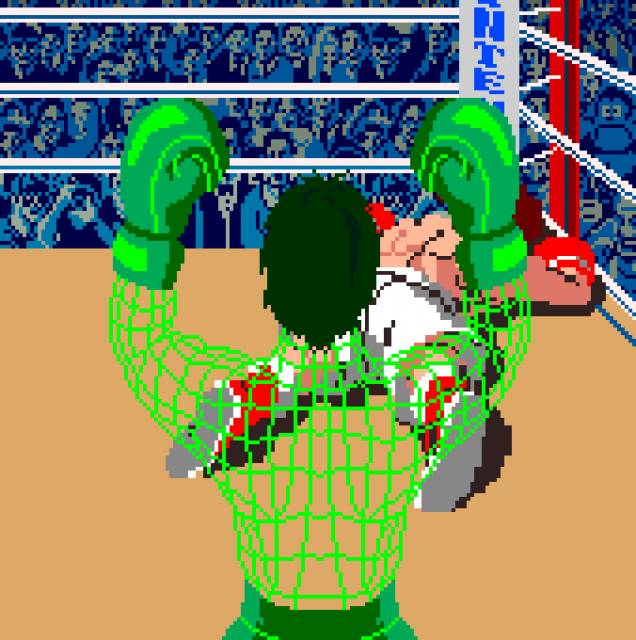The Unseen Blueprint: How System Design Shapes Our Favorite Games
In the vast and complex world of game development, not all features are born equal. Some mechanics arrive fully formed, polished to a mirror sheen, and seamlessly integrated into the player experience. They are the sturdy pillars upon which a great game is built. Others, however, feel… different. They can seem underdeveloped, tacked-on, or conceptually incomplete—the ghosts of a grander design ambition that was curtailed by deadlines, budgets, or technical hurdles. This is a critical juncture in game design. A poorly realized system can cripple an otherwise solid title, leaving players frustrated and immersion shattered. Yet, history is filled with fascinating examples where these seemingly “unfinished” or flawed mechanics, often by complete accident, give rise to unprecedented depth, birthing new genres and dedicated competitive scenes. This article delves into the precarious balance of system design, exploring why incomplete mechanics happen, their potential for disaster, and their surprising capacity for accidental genius. We will dissect how the line between a bug and a feature can define a game’s legacy and what developers can learn from both the triumphs and failures in the ever-evolving landscape of the gaming industry.
Section 1: The Anatomy of a Game Mechanic: From Concept to Implementation
At its core, a video game is a collection of interlocking systems and mechanics. From the simple act of jumping in a platformer to the intricate economic simulation in a strategy game, these mechanics are the verbs of the interactive experience—they are what the player *does*. Understanding their lifecycle is key to appreciating why some feel so right, and others feel so wrong.
What Defines a “Complete” Mechanic?
A “complete” or well-realized mechanic is one that feels intentional, cohesive, and purposeful. Its journey from a simple idea to a final in-game feature typically follows a rigorous process:
- Conception: The initial idea is born, designed to serve a specific purpose, such as enhancing combat, facilitating exploration, or driving the narrative.
- Prototyping: A rough, functional version is built in a test environment, often using simple assets, to see if the core concept is fun and functional. This is a crucial step in modern game development, heavily utilized in engines like Unreal Engine and Unity.
- Iteration: Based on feedback, the prototype is refined over and over. Rules are tweaked, controls are tightened, and interactions with other game systems are considered.
- Integration: The mechanic is fully integrated into the main game build, complete with final art, sound effects, and UI elements.
- Polishing: The final stage involves smoothing out any remaining rough edges, fixing bugs, and ensuring the player feedback (visual, audio, haptic) is satisfying and clear.
A perfect example of a complete mechanic is the V.A.T.S. (Vault-Tec Assisted Targeting System) in the modern *Fallout* series. It serves a clear purpose by blending RPG elements with FPS gameplay, has its own progression path via perks, is fully integrated into the UI, and provides satisfying player feedback. It doesn’t feel like an afterthought; it feels like a core pillar of the game’s design.
Why Do “Unfinished” Mechanics Happen?
Despite the best intentions, many features are shipped in a state that feels underdeveloped. This isn’t usually born from a lack of care but from the harsh realities of the gaming industry. Common culprits include brutal production deadlines for major game releases, forcing teams to “scope down” or cut corners on non-essential systems. Budgetary constraints can starve a promising feature of the resources needed to fully realize it. Sometimes, technical limitations of gaming hardware, whether on PC gaming rigs or consoles like PlayStation and Xbox, prevent a design from being implemented as envisioned. In other cases, a major design pivot late in development can leave older systems feeling vestigial and disconnected from the final product.

Section 2: The Crippling Effect of Incomplete Design
When a game mechanic is poorly implemented or feels incomplete, the consequences can be severe. It can actively detract from the player’s enjoyment, damage the game’s reputation, and in the worst cases, render entire sections of a game irrelevant or frustrating. This is a common point of contention in game reviews and a major topic of discussion within the gaming community.
Player Frustration and Broken Immersion
An underdeveloped system often feels like a gimmick rather than an integral part of the experience. Imagine an RPG with a crafting system where 90% of the recipes are useless, or a stealth game where enemy AI is so simplistic that the elaborate stealth tools feel pointless. These are symptoms of incomplete design. They break immersion by reminding the player of the artificiality of the world and can lead to significant frustration. Players invest time trying to engage with a system, only to find it shallow, buggy, or ultimately unrewarding. This friction can sour the entire experience, even if the game’s core loop is otherwise solid. A feature that doesn’t respect the player’s time and intelligence is one of the fastest ways to lose their engagement.
Case Study: The Perils of Over-Promise and Under-Delivery
Perhaps no game illustrates the danger of ambitious but incomplete design better than the initial 2016 release of *No Man’s Sky*. The game was marketed on the promise of vast, interconnected systems: seamless multiplayer, complex faction interactions, and deep space combat. Upon release, however, players discovered that while the foundational procedural generation technology was impressive, many of these key systems were either absent or implemented in a bare-bones, superficial way. The universe felt vast but empty. The promised multiplayer was non-existent, and other mechanics lacked the depth to sustain long-term interest. The backlash from the gaming community was monumental precisely because the gap between the envisioned design and the delivered product was so vast. The game was a collection of half-baked ideas that failed to coalesce into a cohesive whole, serving as a cautionary tale for the entire AAA games space.
Section 3: Accidental Genius: When Flaws Create Emergent Depth
While incomplete design is often a recipe for disaster, there is a fascinating and paradoxical flip side. Sometimes, a system’s lack of rigid constraints or an unintended quirk in its programming can create something wonderful: emergent gameplay. This is where players discover strategies, techniques, and playstyles that the developers never explicitly designed, leading to incredible depth and longevity.
Defining Emergent Gameplay
Emergent gameplay arises from the interaction of relatively simple, often loosely defined, rules to create complex and unpredictable outcomes. It’s the difference between a game that tells you exactly how to solve a problem and a game that gives you a toolbox and lets you figure it out. An “unfinished” or loosely implemented physics engine, for example, might allow for unexpected forms of movement. A combat system with a few versatile abilities might allow for combos the designers never foresaw. This is where a game transcends its original design and becomes a platform for player creativity and discovery. This phenomenon is often seen in indie games but has also defined the competitive scenes of many AAA titles.

Case Study: The Birth of Competitive Legends
The history of competitive gaming is built on the bedrock of accidental genius. One of the most famous examples is “wavedashing” in the Nintendo classic *Super Smash Bros. Melee*. This technique, which allows players to slide quickly across the ground, was not an intended feature. It was an exploit of the game’s physics, resulting from a player performing an air dodge into the ground at a specific angle. This “flaw” in the game engine added an enormous layer of technical depth and a massive skill ceiling, transforming the game from a party brawler into one of the most revered and enduring titles in esports news. The developers could have “patched” it out, but its existence became the cornerstone of the game’s identity.
Similarly, the “skiing” mechanic from the classic FPS game *Tribes* originated as a bug. Players discovered that by repeatedly tapping the jump key on sloped terrain, they could bypass the engine’s friction code and accelerate to incredible speeds. The developers at Dynamix recognized the fun factor of this unintended mechanic and not only left it in but embraced it, designing future maps around this emergent movement style. What began as a bug became the franchise’s single most defining feature.
Section 4: Best Practices and Developer Recommendations
The dichotomy between crippling flaw and accidental feature presents a unique challenge for game designers. While leaving mechanics to chance is a risky strategy, developers can adopt certain philosophies and practices to mitigate the risks of incomplete design while fostering an environment ripe for positive, emergent play.
Designing for Intentional Emergence
Instead of leaving depth to chance, designers can create systems that are inherently flexible and interactive. This is often called “systemic design.” Rather than scripting a single solution to a problem, developers create robust, interlocking systems that players can manipulate. Games like *The Legend of Zelda: Breath of the Wild* excel at this; its physics, elemental, and AI systems all interact in predictable but unscripted ways, allowing for a staggering amount of creative problem-solving. The goal is not to create an “unfinished” mechanic, but to create a finished set of tools whose applications are open-ended.
The Importance of Post-Launch Support and Community Feedback
In the modern era of cloud gaming and constant updates, a game’s release is no longer the end of its development. This provides a crucial safety net. An underdeveloped mechanic at launch doesn’t have to be a death sentence. By actively listening to the gaming community and analyzing player data, developers can identify which systems are falling short and which unintended behaviors are proving popular. They can then use post-launch patches and content updates to flesh out the former and legitimize the latter. The redemption arc of *No Man’s Sky* is the ultimate testament to this approach. Through years of free, substantial updates, Hello Games transformed its initially shallow systems into the deep, engaging experience players had originally hoped for, earning back immense goodwill in the process.
Actionable Tips for Developers
- Prioritize the Core Loop: Ensure the fundamental, moment-to-moment gameplay is polished and fun before investing heavily in secondary systems. A weak core cannot be saved by a dozen half-baked features.
- Playtest for Fun, Not Just for Bugs: During playtesting, pay close attention to what players are doing, especially when it’s something you didn’t intend. If an exploit or bug is consistently fun, consider turning it into a feature.
- Communicate with Your Community: Be transparent about your design goals. If a feature is not working as intended or needs more time, your community will be more forgiving if they understand the context. Use platforms like Twitch and social media to engage directly with your player base.
Conclusion: The Art of Intentional and Accidental Design
The journey of a game mechanic from concept to code is fraught with peril and opportunity. A system that feels incomplete or half-baked can severely undermine a player’s trust and enjoyment, serving as a constant, jarring reminder of a game’s unfulfilled potential. It can lead to negative game reviews, frustrate a loyal community, and ultimately cripple a title’s success. However, the history of video games has repeatedly shown us that sometimes, within these very imperfections, lies the seed of accidental genius. Unintended exploits and emergent strategies born from loose design can create a depth and longevity that no amount of deliberate planning could have achieved. The ultimate lesson for modern game design is one of balance and adaptation. It is about building robust core experiences while leaving room for happy accidents, and most importantly, possessing the wisdom to listen to your players and recognize the difference between a crippling flaw and a beautiful, emergent feature.













